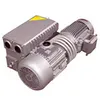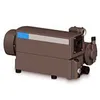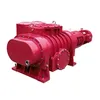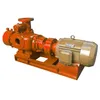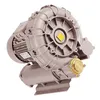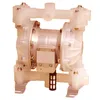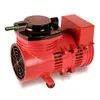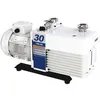A Vacuum Pumps is a device that removes gas molecules from a sealed volume to create a partial vacuum. They are essential in various industries, including manufacturing, medical, and research, for processes requiring controlled environments. These pumps come in multiple types, each suited for specific pressure ranges and applications, ensuring efficiency and reliability in operations.
Understanding the specifications of vacuum pumps is crucial for selecting the right model. Below is a detailed table of common parameters:
| Parameter | Description | Typical Range |
|---|---|---|
| Ultimate Pressure | The lowest pressure achievable by the pump. | 1x10⁻³ to 1x10⁻⁹ mbar |
| Pumping Speed | Volume of gas removed per unit time, measured in m³/h or L/s. | 5 to 500 m³/h |
| Power Consumption | Electrical power required for operation, in watts or horsepower. | 0.25 to 10 HP |
| Noise Level | Sound produced during operation, measured in decibels (dB). | 50 to 75 dB |
| Port Size | Inlet and outlet connection dimensions for piping. | 1/4" to 2" flange |
| Operating Temperature | Range of ambient temperatures for safe operation. | 5°C to 40°C |
Vacuum pumps are versatile tools used across numerous sectors:
Proper maintenance ensures longevity and optimal performance:
What is the difference between a rough vacuum pump and a high vacuum pump?
Rough vacuum pumps operate at higher pressures (above 1 mbar) and are used for initial evacuation, while high vacuum pumps handle lower pressures (below 1x10⁻³ mbar) for fine vacuum conditions, often in combination with rough pumps.
How often should I change the oil in my vacuum pump?
For oil-sealed pumps, change the oil every 500 to 1000 operating hours or as recommended by the manufacturer, depending on usage intensity and environmental conditions. Contaminated oil can reduce efficiency and damage the pump.
Can vacuum pumps handle corrosive gases?
Yes, but specific models with corrosion-resistant materials, such as stainless steel or PTFE coatings, are required. Always check the pump's compatibility with the gases used to avoid premature failure.
What factors affect the pumping speed of a vacuum pump?
Pumping speed can be influenced by inlet pressure, gas type, temperature, and system conductance. Higher pressures and lighter gases generally allow faster pumping, but obstructions in the system can reduce efficiency.
Are there oil-free vacuum pumps available?
Yes, oil-free pumps like diaphragm, scroll, and dry screw pumps are available, offering clean operation without oil contamination, making them ideal for sensitive applications in food, medical, and electronics industries.
How do I select the right vacuum pump for my application?
Consider factors such as required vacuum level, pumping speed, gas compatibility, power supply, maintenance needs, and environmental conditions. Consulting with a specialist or referring to manufacturer guidelines can help ensure the best choice.
What is the typical lifespan of a vacuum pump?
With proper maintenance, a vacuum pump can last 5 to 15 years, depending on the type and usage. Rotary vane pumps may require more frequent part replacements, while turbo molecular pumps can have longer lifespans if well-maintained.
Can I use a vacuum pump for suction applications?
Yes, vacuum pumps are commonly used for suction in medical, dental, and industrial settings, but ensure the pump is designed for continuous operation and has the appropriate flow rate for the application.

